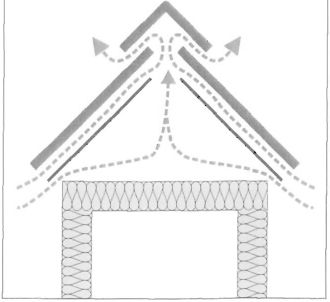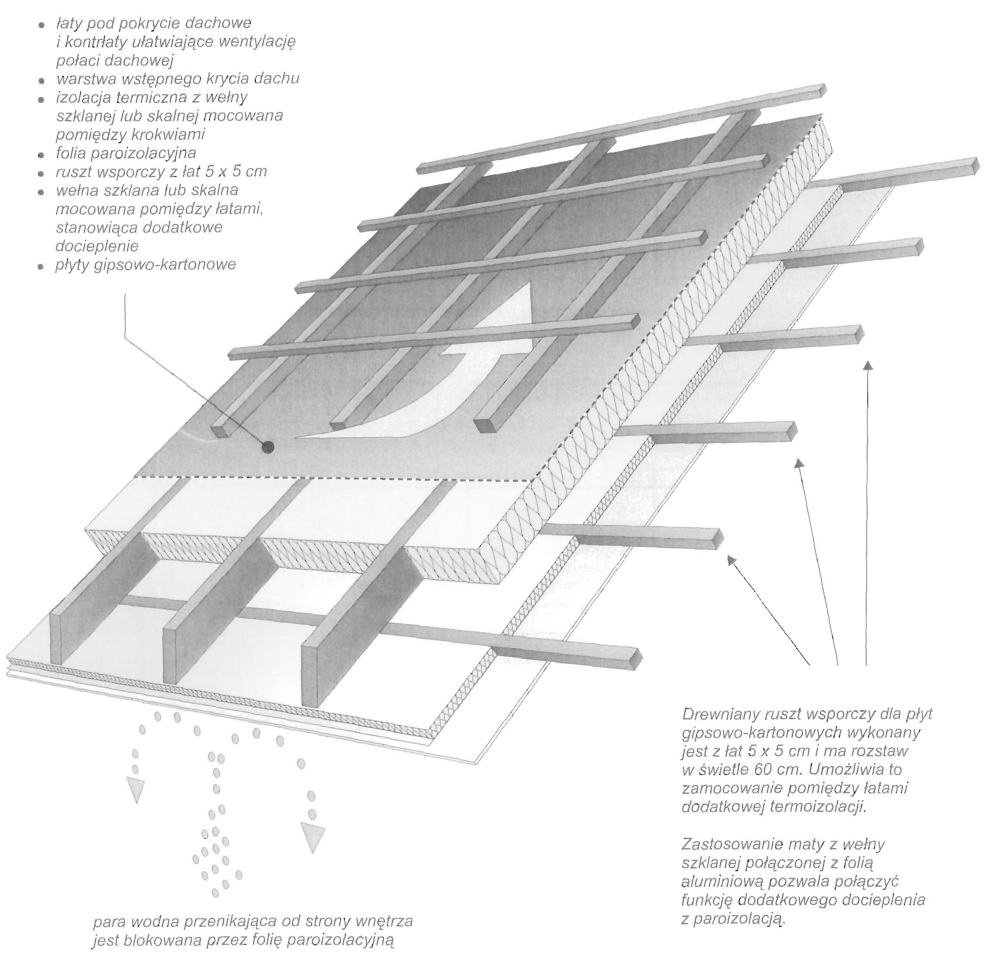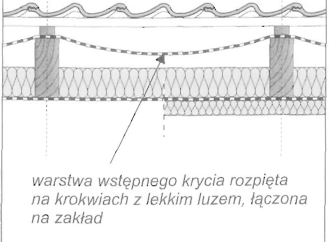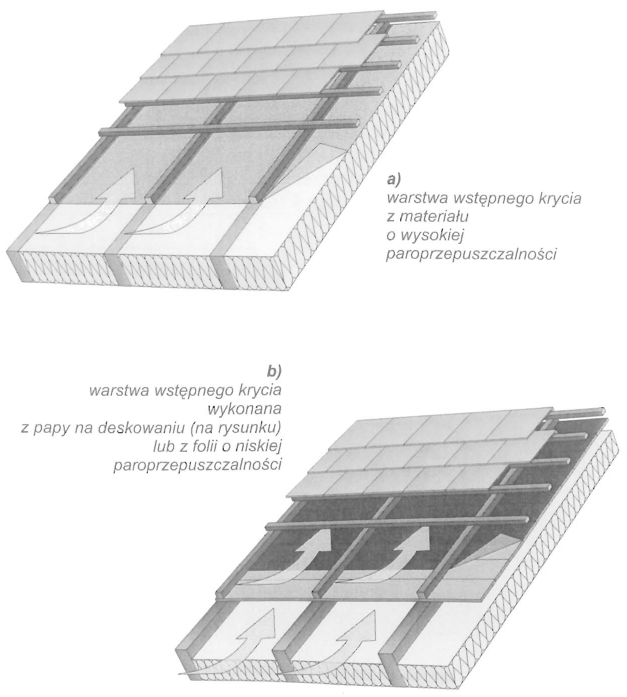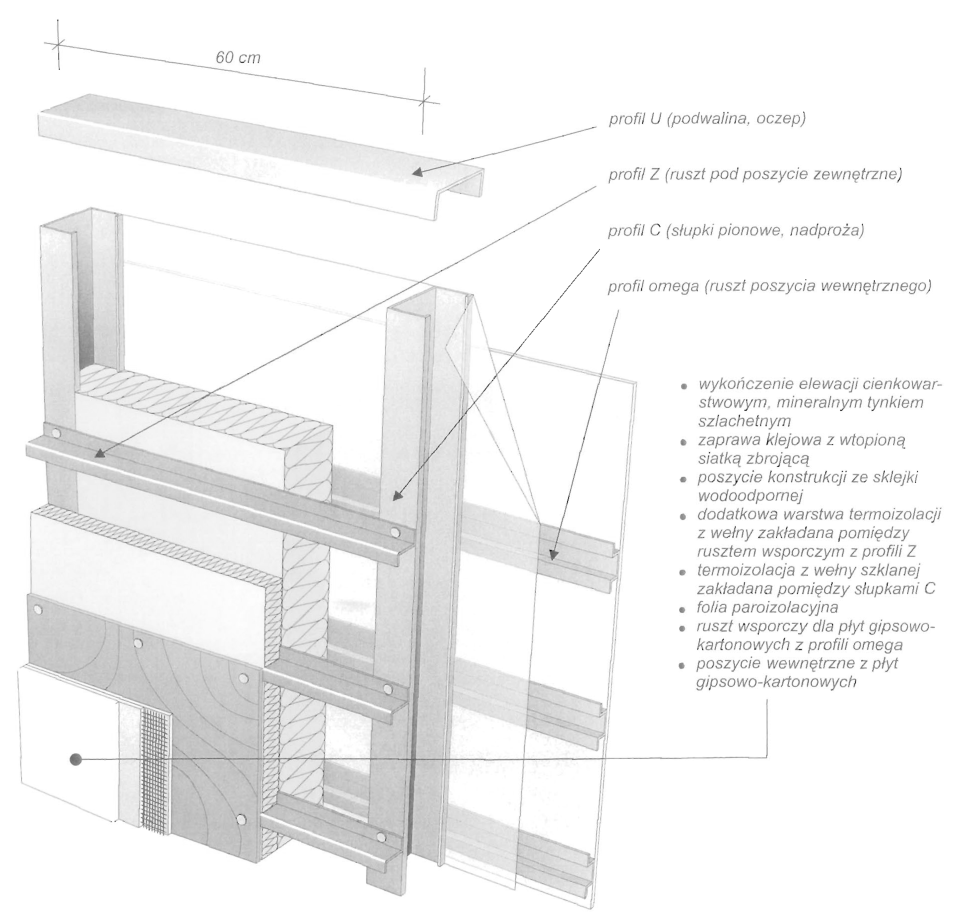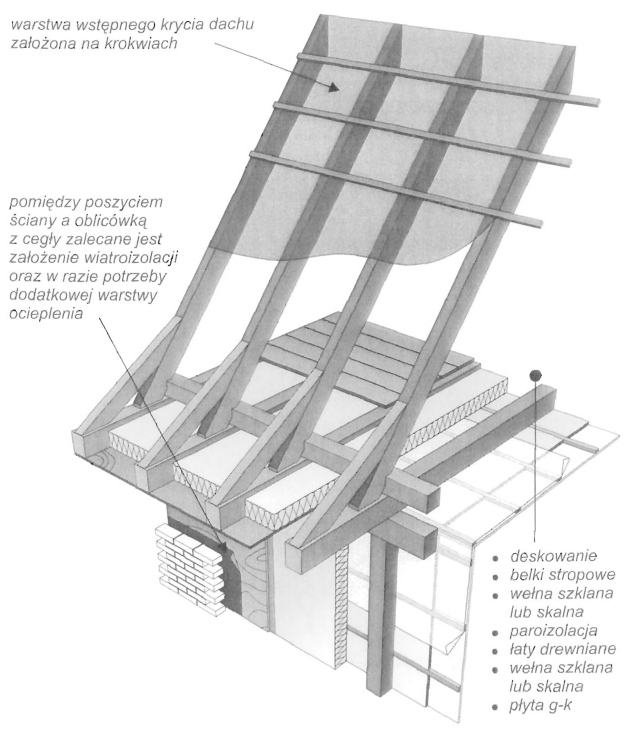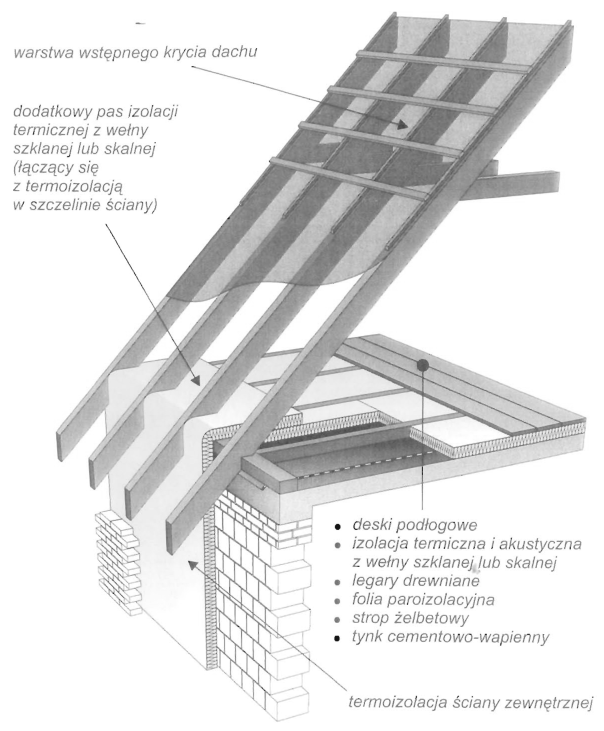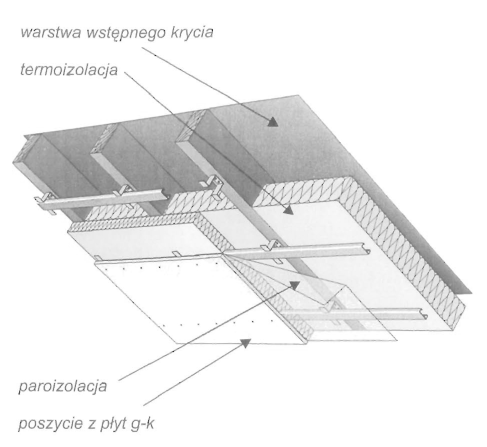 Połać dachu z dodatkową warstwą termoizolacji mocowaną pod krokwiami, pomiędzy rusztem wsporczym poszycia wnętrza z płyt gipsowo-kartonowych.
Połać dachu z dodatkową warstwą termoizolacji mocowaną pod krokwiami, pomiędzy rusztem wsporczym poszycia wnętrza z płyt gipsowo-kartonowych.
W dachach z poddaszem nieużytkowym termoizolacja rozkładana jest na stropie górnej kondygnacji. Wentylacja takiego poddasza odbywa się poprzez otwory wlotowe nad okapem dachu i wylotowe w górnej części ścian szczytowych i pod kalenicą. Duża objętość powietrza między warstwą ocieplenia a połaciami dachu zapewnia wymianę wilgoci i wyrównanie temperatury.
W budynkach nowo wznoszonych z dachami skośnymi poddasze pełni najczęściej funkcję użytkową, dlatego wymaga wykonania ocieplenia połaci dachowych.
Układ warstw połaci dachu powinien zabezpieczać wnętrze przed opadami atmosferycznymi i wahaniami temperatury. Ponadto układ warstw w ocieplonej połaci dachowej powinien chronić więźbę dachu i termoizolację przed ryzykiem zawilgocenia na skutek kondensacji przenikającej od strony wnętrza pary wodnej. Aby zablokować napływ pary wodnej w ocieplonych połaciach należy bezwzględnie stosować od strony wnętrza paroizolację. Prawidłowe zaprojektowanie termoizolacji, warstwy wstępnego krycia, szczelin wentylacyjnych i innych elementów składowych ocieplonej połaci jest możliwe w wielu wariantach uzależnionych od takich czynników jak wysokość krokwi, nachylenie połaci dachowych, rozwiązanie wentylacji połaci, itd.
W dachach z poddaszem użytkowym termoizolacja umieszczana jest w grubości połaci dachowej. Izolacja cieplna może być rozmieszczona w różny sposób, uzależniony od konstrukcji więźby dachowej oraz grubości i właściwości materiału izolacyjnego.
• Izolacja cieplna między krokwiami
• Izolacja cieplna między i pod krokwiami
• Izolacja cieplna ponad krokwiami
Każdy sposób umieszczenia termoizolacji w połaci musi uwzględniać konieczność wentylowania dachu oraz wymogi związane z przepisami o ochronie cieplnej budynków.
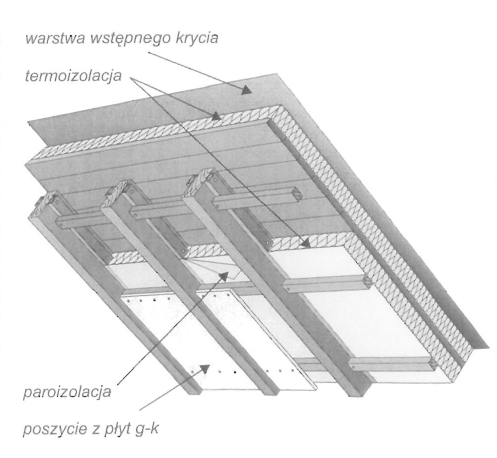 Połać dachu z częściowo odsłoniętą więźbą dachową, z dodatkową termoizolacją wykonaną metodą wierzchnią na deskowaniu, ponad poziomem krokwi.
Połać dachu z częściowo odsłoniętą więźbą dachową, z dodatkową termoizolacją wykonaną metodą wierzchnią na deskowaniu, ponad poziomem krokwi.
